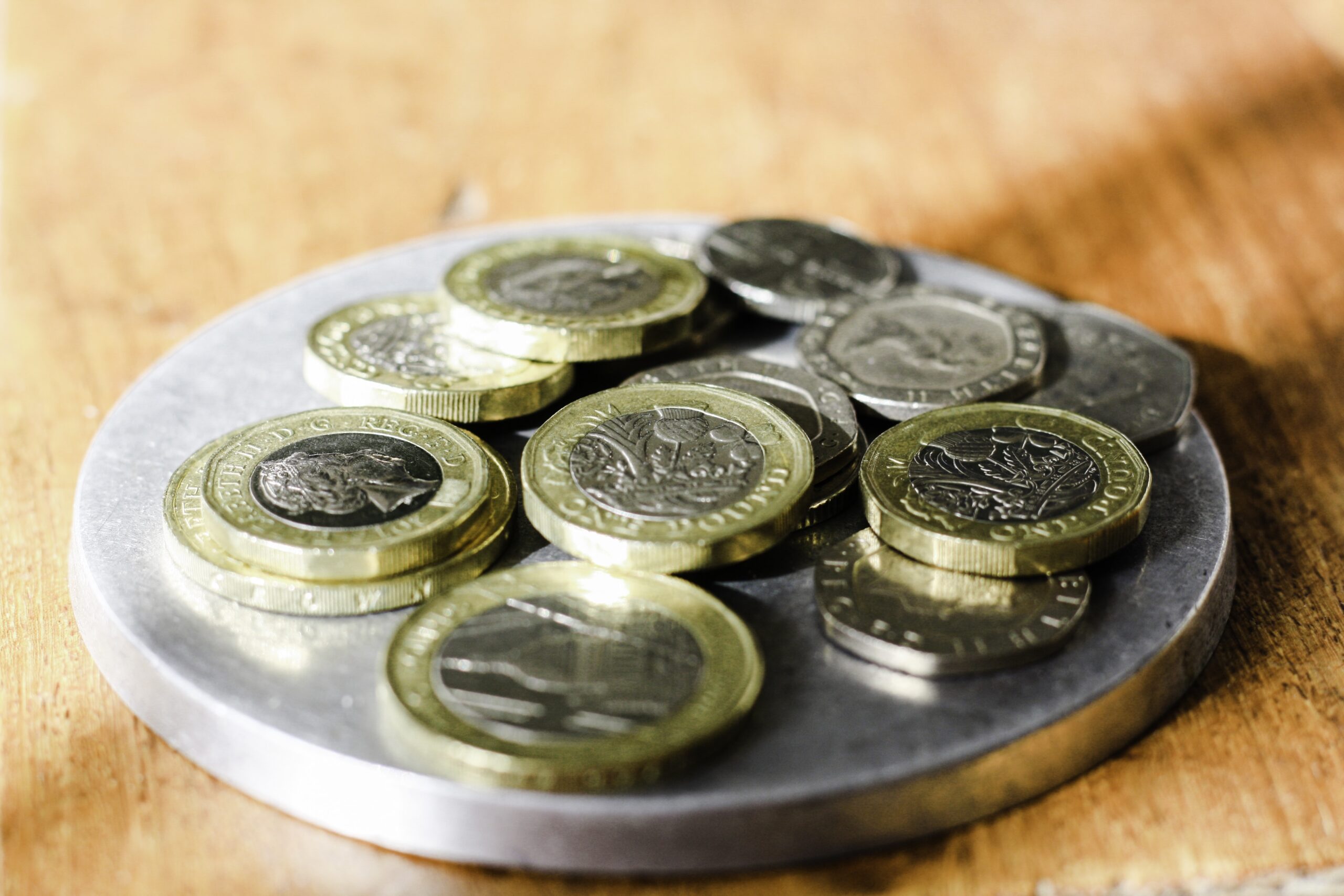Are unexpected expenses catching you off guard? Wondering how to effectively allocate funds for emergencies and build an emergency fund? Look no further! In this article, we’ll explore practical tips and strategies that can help you navigate the world of emergency funds. By understanding the importance of preparation and implementing smart saving habits, you’ll be equipped to handle financial emergencies with ease. Let’s delve into the world of emergency funds and discover how you can secure your financial future.
Check out our Recommend Products
Setting Financial Goals
Assessing current financial situation
Before you can begin allocating funds for emergencies and building an emergency fund, it’s important to assess your current financial situation. Take a close look at your income, expenses, and any existing debts. Evaluating your financial standing will give you a clear understanding of where you currently stand and help you determine how much you can realistically allocate towards your emergency fund.
Defining emergency fund size
Once you have assessed your financial situation, the next step is to define the size of your emergency fund. A general rule of thumb is to save at least three to six months’ worth of living expenses in your emergency fund. However, this amount may vary depending on factors such as your income stability, monthly expenses, and personal circumstances. Consider factors such as whether you have dependents, any existing health issues, or a higher risk of job instability when determining the appropriate size for your emergency fund.
Establishing a time frame for building the fund
Once you have determined the size of your emergency fund, it’s important to establish a realistic time frame for building it. Setting a specific goal will help you stay motivated and track your progress. Consider your income, expenses, and other financial obligations when establishing a time frame. Keep in mind that building an emergency fund is a long-term commitment, so it’s essential to have patience and perseverance throughout the process.
Creating a Budget
Tracking income and expenses
To effectively allocate funds for emergencies and build an emergency fund, it’s crucial to have a clear understanding of your income and expenses. Start by tracking your income and all of your expenses over a certain period, such as a month or three months. This will give you a comprehensive view of where your money is going and help you identify areas where you can potentially save.
Identifying areas for potential savings
Once you have a clear overview of your income and expenses, it’s time to identify areas where you can potentially save. Look for any unnecessary or discretionary expenses that you can reduce or eliminate. This could include eating out less frequently, reducing entertainment expenses, or finding ways to save on utilities or transportation costs. Even small changes can add up over time and contribute to your emergency fund.
Allocating funds for emergencies
After identifying areas for potential savings, it’s important to allocate a portion of your income specifically towards emergencies. Set aside a certain percentage or dollar amount from each paycheck to contribute to your emergency fund. Treat this allocation as a regular expense that you must pay yourself. By prioritizing and automating these contributions, you ensure that your emergency fund continues to grow steadily.

Building an Emergency Fund
Determining initial funding source
When building an emergency fund, it’s crucial to determine an initial funding source. This could be money you already have saved, a bonus or windfall, or even reallocating some funds from your existing savings accounts. Having an initial boost to your emergency fund can provide a solid foundation and motivate you to continue saving.
Starting with a small amount
The idea of saving three to six months’ worth of living expenses may seem overwhelming, but don’t let that discourage you. Remember that every journey starts with a single step. Start by setting a smaller goal, such as saving $500 or $1,000 as your initial milestone. Celebrate your achievements along the way, as this will help you stay motivated and encouraged as you work towards building your emergency fund.
Automating savings
One of the best ways to ensure consistent contributions to your emergency fund is by automating your savings. Set up an automatic transfer from your checking account to a separate savings account dedicated to emergencies. By automating this process, you remove the temptation to spend that money elsewhere and make saving a priority in your financial routine.
Increasing contributions gradually
As your financial situation improves, consider increasing your contributions to your emergency fund gradually. This can be done as you pay off debts or when you receive a salary increase. By gradually increasing your contributions, you’ll be able to reach your goal of three to six months’ worth of living expenses sooner than you think.
Choosing the Right Savings Account
Evaluating different types of accounts
When it comes to choosing the right savings account for your emergency fund, it’s important to evaluate different types of accounts available to you. Consider factors such as interest rates, fees, minimum balance requirements, and access to your funds. Look for a savings account that offers a competitive interest rate and has minimal fees to maximize the growth of your emergency fund.
Considering interest rates and fees
Interest rates play a significant role in the growth of your emergency fund over time. Look for a savings account that offers a higher interest rate to help your money grow faster. Additionally, be mindful of any fees associated with the account, such as monthly maintenance fees or transaction fees. These fees can eat into your savings and reduce the overall growth of your emergency fund.
Exploring online banking options
In today’s digital age, online banking offers convenience and often provides higher interest rates on savings accounts. Consider exploring online banking options for your emergency fund. Online banks typically have lower overhead costs and can pass those savings onto customers in the form of higher interest rates. Make sure to research and choose a reputable online bank that offers the features and benefits you need.

Prioritizing Debt Payments
Assessing existing debts
When allocating funds for emergencies, it’s important to assess your existing debts and prioritize their repayment. Make a list of all your debts, including credit cards, loans, and any other outstanding balances. Take note of the interest rates and minimum payments for each debt. This assessment will help you determine which debts to focus on first and how much you can allocate towards debt repayment while still building your emergency fund.
Creating a debt repayment plan
Once you have assessed your existing debts, create a debt repayment plan. Consider two popular methods for tackling debt: the snowball method and the avalanche method. The snowball method involves paying off your smallest debt first while making minimum payments on other debts, gradually working your way up to larger debts. The avalanche method, on the other hand, involves prioritizing debts with the highest interest rates first. Choose the method that aligns with your financial goals and motivates you to pay off your debts effectively.
Balancing debt payments with emergency savings
While it’s essential to prioritize debt repayment, it’s equally important to balance debt payments with contributions to your emergency fund. Aim to strike a balance between the two by allocating a certain percentage of your income towards both debt payments and emergency savings. By doing so, you address your financial obligations while simultaneously building a safety net for unforeseen circumstances.
Expanding Income Sources
Exploring additional part-time work
If your current income is not sufficient to cover your expenses and contribute to your emergency fund, consider exploring additional part-time work. Look for opportunities that complement your schedule and skills. This could include freelance work, consulting gigs, or even taking on a second job. The additional income from a part-time job can help you allocate more funds towards your emergency fund, accelerating its growth.
Freelancing or consulting
Freelancing or consulting in your area of expertise can be an excellent way to expand your income sources. Utilize your skills and market them to potential clients or businesses in need of your services. Whether it’s writing, graphic design, programming, or consulting in your field, freelancing or consulting can provide a steady stream of income that can significantly contribute to your emergency fund.
Generating passive income
Another way to expand your income sources is by generating passive income. Passive income is money you earn with little to no effort on your part once the initial work is done. This could include income from rental properties, dividends from investments, or even royalties from creative works. Generating passive income can provide a consistent stream of funds that can supplement your primary income and contribute to your emergency fund.

Establishing an Emergency Budget
Identifying essential expenses
In times of financial uncertainty or emergencies, it’s crucial to identify your essential expenses. These are the expenses that are necessary for your basic needs and survival. Consider expenses such as housing, food, utilities, transportation, and healthcare. By identifying and prioritizing these essential expenses, you can develop a clear emergency budget that ensures your basic needs are met, even in the face of unforeseen circumstances.
Cutting back on discretionary spending
While your emergency budget focuses primarily on essential expenses, it’s also essential to cut back on discretionary spending. Evaluate your non-essential expenses, such as dining out, entertainment, travel, and luxury items. Consider ways to reduce or eliminate these expenses temporarily during times of financial uncertainty to free up more funds for your emergency fund.
Creating a monthly emergency budget
Once you have identified your essential expenses and cut back on discretionary spending, it’s time to create a monthly emergency budget. This budget should prioritize your essential expenses and allocate a portion of your income towards savings, including your emergency fund. Continuously review and adjust your emergency budget as your financial situation changes to ensure that it remains realistic and effective.
Emergency Fund vs. Investments
Understanding the purpose of each
While building an emergency fund is crucial, it’s also important to consider investing your money for the long term. Understand the purpose of each financial strategy. An emergency fund is designed to provide you with a safety net during unforeseen circumstances, such as medical emergencies or job loss. On the other hand, investments are intended to grow your wealth over time and help you achieve long-term financial goals, such as retirement or education funding.
Balancing risk and return
When deciding between allocating funds for emergencies and investing, it’s important to balance risk and return. Emergency funds should be readily accessible and not subject to significant market fluctuations, which means they usually have lower interest rates. Investments, on the other hand, carry varying degrees of risk but have the potential to generate higher returns over the long term. Consider your risk tolerance and financial goals when deciding how much to allocate towards emergencies and investments.
Diversifying investments
If you choose to invest a portion of your funds rather than allocating everything towards emergencies, it’s crucial to diversify your investments. Diversification helps spread the risk and potential return across different asset classes, such as stocks, bonds, and real estate. By diversifying your investments, you reduce the impact of market fluctuations on your overall financial portfolio and increase the likelihood of long-term growth.

Covering Unforeseen Expenses
Preparing for medical emergencies
Medical emergencies can happen unexpectedly and often come with hefty costs. When building your emergency fund, it’s crucial to consider budgeting for potential medical expenses. Review your health insurance coverage and deductibles to see if you have appropriate coverage. Additionally, consider setting aside additional funds to cover unexpected medical bills, prescription costs, or necessary treatments not covered by insurance.
Handling unexpected home repairs
Homeownership comes with its fair share of potential unexpected expenses, such as repairs and maintenance. When allocating funds for emergencies, it’s important to budget for these potential home repair costs. Set aside a portion of your emergency fund specifically for home-related emergencies or repairs. This will allow you to address issues promptly without derailing your overall financial stability.
Addressing car-related expenses
Car-related expenses can also catch us off guard and be a significant financial burden. Budget for potential car repairs, maintenance, and unexpected accidents when allocating funds for emergencies. Consider having a separate portion of your emergency fund specifically designated for car-related expenses. This way, you can address any unforeseen issues without jeopardizing your overall financial well-being.
Rebuilding the Emergency Fund
Re-evaluating the fund size
As life circumstances change, it’s important to re-evaluate the size of your emergency fund periodically. Factors such as an increase in living expenses, job changes, or new financial responsibilities may require adjusting the size of your emergency fund. Periodically review your financial situation and make any necessary adjustments to ensure that your emergency fund remains adequate for your needs.
Adjusting the budget and savings plan
When rebuilding your emergency fund, it may be necessary to adjust your budget and savings plan. As you allocate more funds towards rebuilding your emergency fund, consider cutting back on discretionary spending or finding additional sources of income. By reevaluating and adjusting your budget and savings plan, you ensure that you’re on track to rebuild your emergency fund effectively and efficiently.
Building an emergency fund and allocating funds for emergencies is one of the most important steps you can take to establish financial security. By assessing your current financial situation, creating a budget, diversifying your income sources, and consistently saving, you’ll be well on your way to building a robust emergency fund that provides you with peace of mind and financial stability. Remember, the journey towards financial security is a long-term commitment, but with determination and smart financial planning, you can achieve your goals and be prepared for whatever life throws your way.





